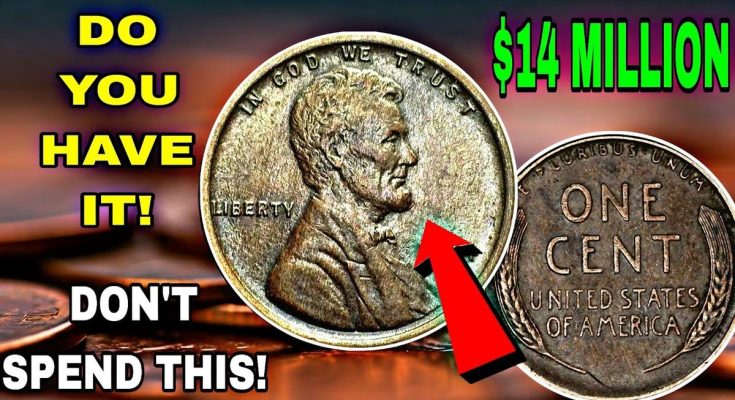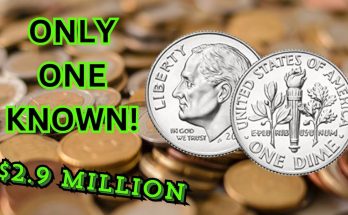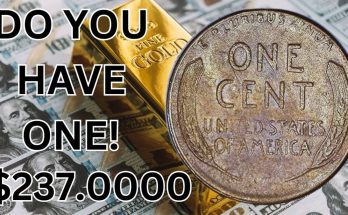Wheat Penny Jackpot: Top Coins That Turn Pocket Change Into a Fortune!
Have you ever wondered if that old penny lying in your change jar could be worth a small fortune? You might want to take a closer look—because some rare Lincoln wheat pennies have shocked collectors and casual coin owners alike, selling for thousands—or even millions—of dollars. The photo above highlights one such legendary coin: the Lincoln Wheat Cent, a piece of American history that could turn your ordinary pocket change into an extraordinary treasure.
The Lincoln Wheat Penny, produced by the U.S. Mint from 1909 to 1958, features Abraham Lincoln on the obverse (front) and two stylized wheat stalks on the reverse (back). These coins were the first U.S. pennies to bear a president’s likeness and are beloved by collectors for their historic charm. But what makes certain wheat pennies so valuable isn’t just their age—it’s their rarity, minting errors, and unique backstories.
Why Some Wheat Pennies Are Worth Millions
Not all wheat pennies are created equal. While most are only worth one cent, a select few were struck under unusual conditions, making them highly sought after. The image’s bold caption—“Don’t Spend This!”—isn’t exaggerating. Some rare versions of this humble coin have fetched five-, six-, and even seven-figure prices at auctions. Here’s why:
-
Minting Errors and Composition Mistakes:
One of the most famous error coins is the 1943 Bronze Wheat Penny. During World War II, the U.S. Mint switched from copper to zinc-coated steel to save copper for the war effort. However, a few leftover copper planchets (blanks) accidentally got used to strike 1943 pennies. These rare mistakes are now worth hundreds of thousands to over a million dollars, depending on condition. A pristine 1943 bronze penny once sold for nearly $1.7 million. -
Low Mintages:
Some years and mint marks had limited production, especially during the early 1900s. The 1909-S VDB Wheat Penny, for example, was the first Lincoln cent ever made and bears the initials “VDB” for designer Victor David Brenner. With only about 484,000 pieces minted in San Francisco, it’s one of the most collectible U.S. coins today, worth $1,000–$3,000 or more in good condition. -
Historical Significance:
Beyond rarity, collectors are drawn to coins that tell a story. The Wheat Penny era spanned two World Wars, the Great Depression, and monumental shifts in U.S. history. Owning a coin from that period connects collectors to America’s past, making it not just an investment, but a tangible piece of history.
How to Identify Valuable Wheat Pennies
The penny shown in the image is a perfect example of what to look for. On the front (obverse) side, note the portrait of Abraham Lincoln and the word “LIBERTY.” On the back (reverse), the design includes two wheat ears framing the words “ONE CENT” and “UNITED STATES OF AMERICA.” While all Wheat Pennies share this layout, key indicators can help you spot a rare one:
-
Check the Date and Mint Mark: Look under the date on the obverse side. Letters like “S,” “D,” or none at all indicate where the coin was minted (San Francisco, Denver, or Philadelphia). Certain dates combined with mint marks—like 1914-D, 1922 (no D), or 1955 Double Die—are particularly valuable.
-
Inspect for Errors: Doubling (where letters or numbers appear stamped twice), off-center strikes, and wrong-metal errors drastically increase value.
-
Condition Matters: Coins in better condition fetch much higher prices. Grading terms like “Fine,” “Extremely Fine,” or “Mint State (MS)” describe how much wear a coin has endured.
Modern Finds and Ongoing Hype
Even today, collectors are discovering rare wheat pennies in circulation, estate sales, or old piggy banks. You don’t need to be a numismatist to check your coins—sometimes it just takes a keen eye and a little luck. The excitement around these coins has exploded online, with videos, articles, and images like the one shown encouraging people to reexamine their spare change.
While the claim of “$14 million” seen in the image is more of a sensationalized example, it represents the idea that certain coins—depending on condition, rarity, and demand—can indeed reach astronomical prices. The message is simple: don’t underestimate the value of what’s in your pocket.
Top Valuable Wheat Pennies to Look Out For
Here’s a quick list of notable examples:
-
1909-S VDB Lincoln Wheat Penny: Up to $3,000+
-
1914-D Lincoln Wheat Penny: $500–$5,000
-
1922 No D (Philadelphia error): $500–$15,000
-
1931-S Wheat Penny: $100–$150
-
1943 Bronze Wheat Penny: $100,000–$1.7 million
-
1955 Double Die Wheat Penny: $1,000–$25,000
These figures depend on the coin’s condition, authentication, and demand at the time of sale.
The Thrill of the Hunt
Coin collecting (or “numismatics”) is more than a hobby—it’s a blend of history, art, and treasure hunting. Many collectors start by searching through loose change or coin rolls from the bank. Others specialize in hunting specific errors or mint marks. Finding a valuable wheat penny is like uncovering a hidden relic from the past—a reminder that history often hides in plain sight.
So next time you come across an old penny, don’t dismiss it. Check the date, look for unique markings, and research before spending it. Who knows? You might be holding a small copper coin worth more than a new car—or even a house.
Caption Summary:
The photo showcases a close-up of the classic Lincoln Wheat Penny, accompanied by bold text warning collectors and everyday spenders alike not to overlook this piece of potential fortune. While most pennies are worth only one cent, rare variations—like the 1943 bronze or 1909-S VDB—can turn pocket change into millions. Check your coins; you might just strike gold in copper!



